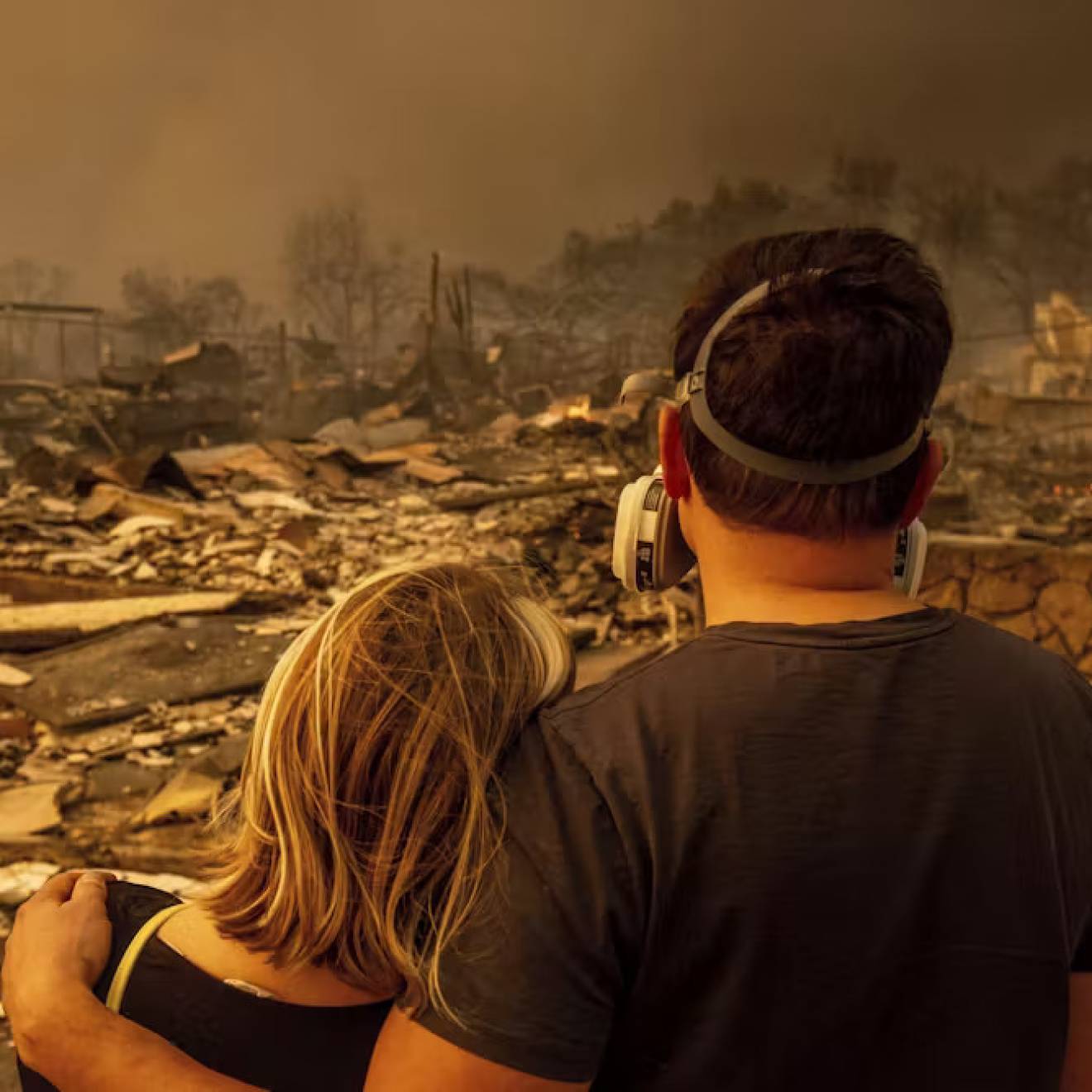Kimberly Hickock, UC Newsroom
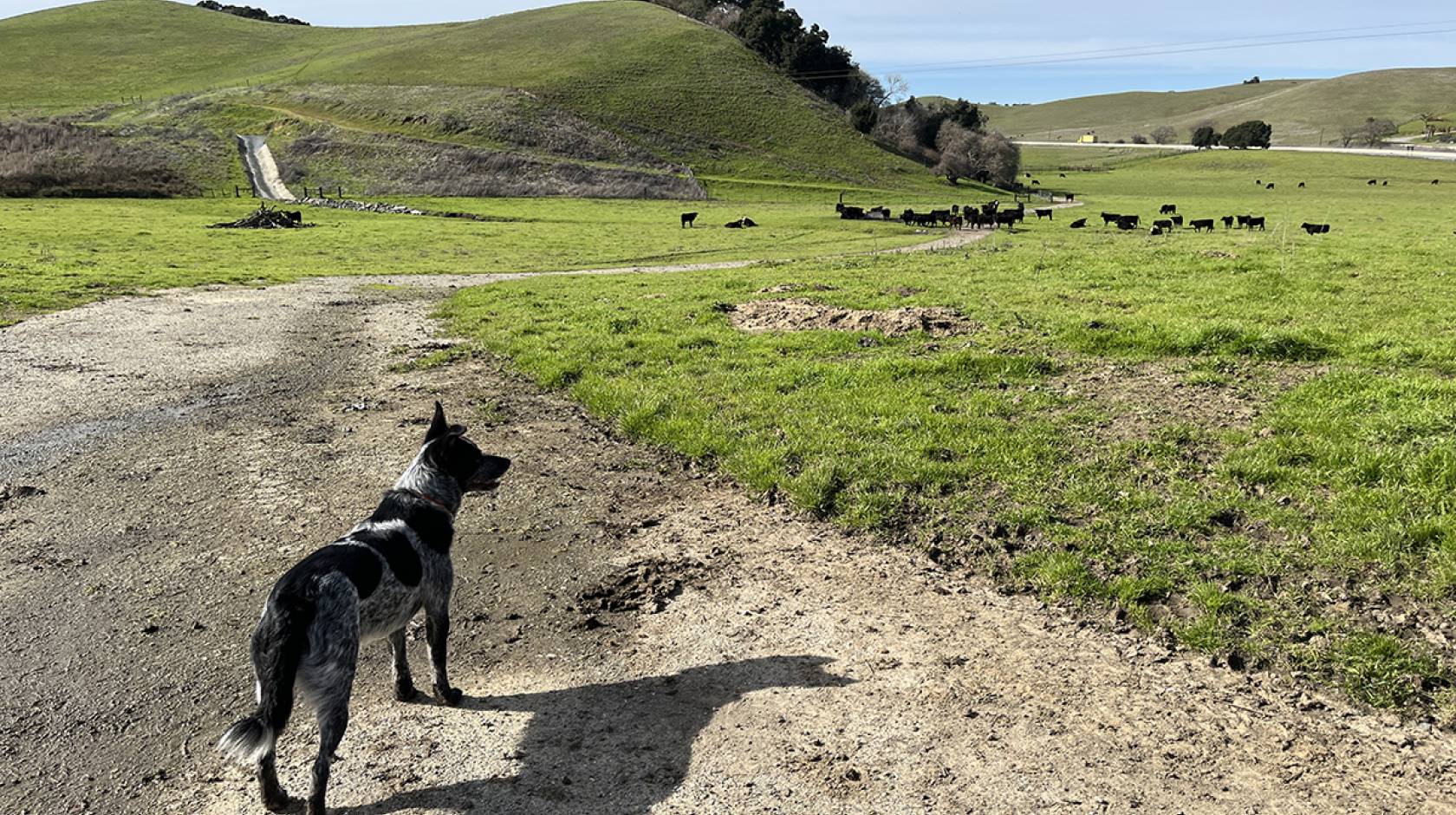
Across the highway from the town of San Juan Bautista, urban sociologist Miriam Greenberg steps through the rails of a metal livestock gate and onto a dirt road. With three of her colleagues, Greenberg follows Jared F. Childress, burn boss with the Central Coast Prescribed Burn Association, and his spunky blue heeler, Remington Tanglefoot, onto the Nyland property—a 540-acre cattle ranch protected from development in perpetuity, thanks to its recent acquisition by a group of land trusts led by the San Benito Agricultural Land Trust.
On this crisp late-winter day, a few dozen cattle graze in sprawling green fields on either side of the dirt road, unbothered by the steady hum of traffic separating them from paved suburbia. This expansive area of open grassland seems ideal for an extension of the suburban landscape within view on the other side of the highway. “There is a lot of interest in developing the land along this road, and a lot of effort to stop that from happening,” Greenberg says.
Greenberg, a professor of sociology at the University of California, Santa Cruz, is leading a large-scale, interdisciplinary study to understand how lack of affordable housing in urban areas and increased pressure for housing beyond the city limits affects the growth of the wildland urban interface (WUI), where the fringes of development reach into natural areas.
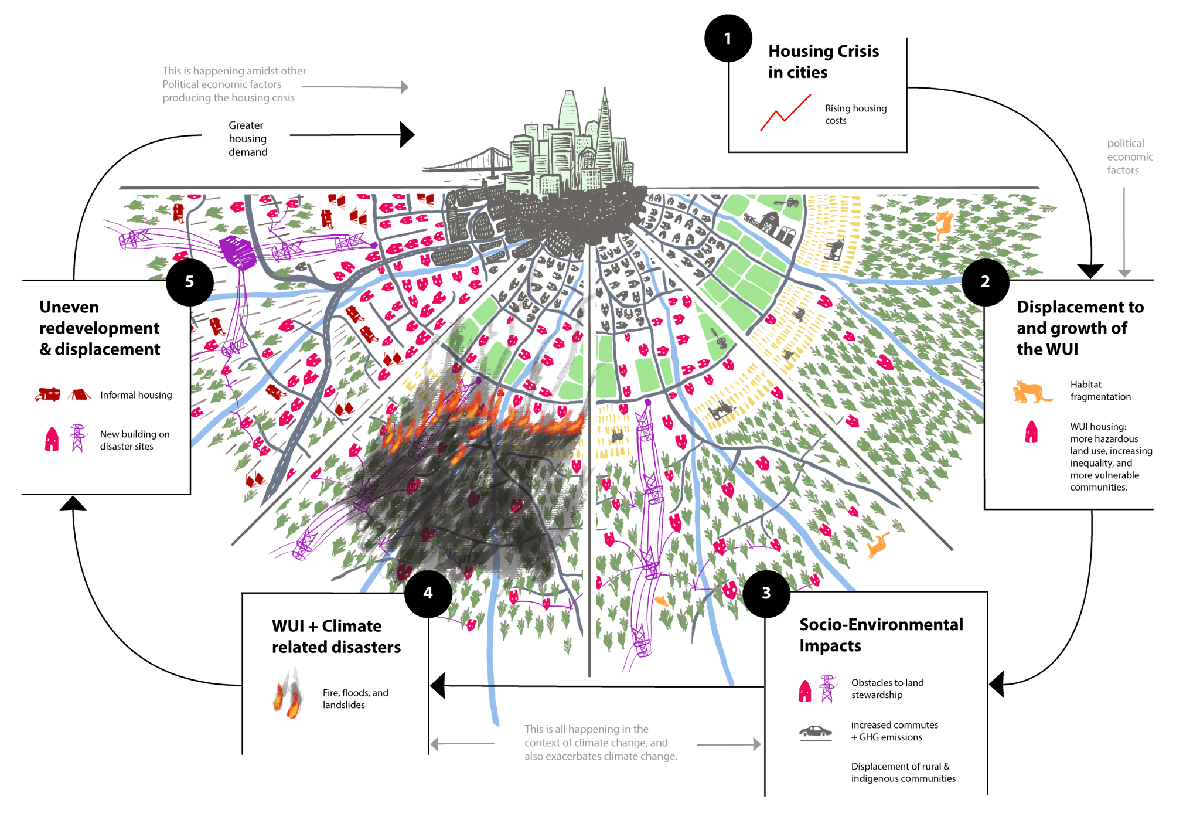
The project, titled “WUI Research for Resilience: Addressing California’s Climate, Conservation & Housing Crises,” is supported by a $1.6 million California Climate Action Seed Grant provided by the University of California Office of the President. The funds come from the California State Budget Act of 2022–23, which allocated $100 million to the University of California Office of the President to invest in research that will have a swift and measurable impact on climate resilience.
Greenberg and her colleagues are working with community members and groups such as the Monterey Bay Central Labor Council; the Santa Cruz County Office of Response, Recovery & Resilience; and the Amah Mutsun Relearning Program, among many others, to create a “WUI Equity Atlas”—an interactive, online tool that will allow regional planners to visualize and understand connections between housing, climate, and conservation issues over space and time. The hope is that such knowledge will help communities and regions create more climate-resilient housing strategies for the future.
“We see this as an opportunity to bring together a wide range of people who care about each of these issues,” Greenberg told UC Santa Cruz in a press release in late 2023. “Bringing those conversations together and showing people how these crises are related can help to center the critical need for affordable urban housing as part of the climate action and sustainability movement.”
Homes on the edge
Housing development in the WUI is the fastest growing use of land in California, and a leading cause of wildfire, natural area loss and climate change. Although some people move to these wild spaces because of a genuine desire to steward the land and be closer to nature, or because of cultural ties to rural communities, that’s not true for everyone.
“Our sense, from what we’ve observed through previous research, is that there are many people who are moving further away from urban areas largely or primarily because of affordability pressures,” Greenberg says.
Last month, the National Low Income Housing Coalition reported that Santa Cruz County is the most expensive place for renters in the United State—for the second year running. There are far more people who want to live in the city than can afford to. For more than a decade the demand for affordable housing has far exceeded supply, leading to Santa Cruz having the highest rate of homelessness in the nation.
“Where did this housing crisis come from? What are its effects on people and the environment?” Greenberg and her colleagues want to know. “And of course, this is all happening in the context of climate change,” she says.
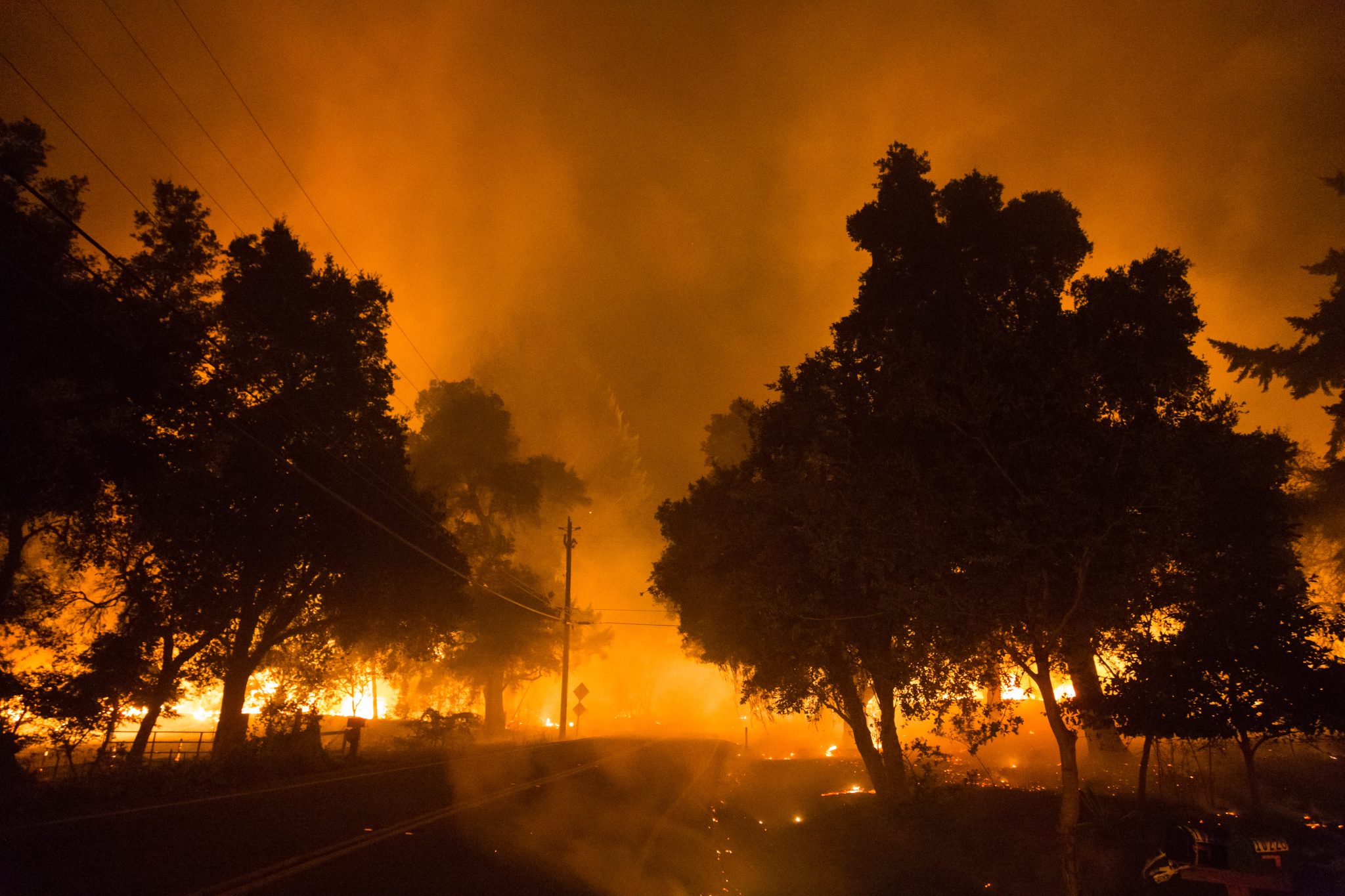
To better dissect why so many people are moving into the WUI, the researchers are conducting large-scale surveys of people living in the most rapidly growing areas surrounding Santa Cruz—primarily in the Santa Cruz Mountains in northern Santa Cruz County, and around the Pajaro River Valley to the south. Among several other questions, the researchers aim to ask residents if they could afford to live in a more urban location, would they choose to, given how dangerous it can be to live in the WUI due to the risk of wildfire, floods, and other natural disasters. The researchers wish to understand increasing inequality in these areas due to growing numbers of affordability migrants, and how best to create equitable support for WUI communities.
In addition to surveying WUI residents, the team will comb through historical archives and conduct interviews to examine the history of wildfire and WUI development in the Santa Cruz Mountains going back to the nineteenth century. “We’re thinking there may be a cycle of building in the aftermath of wildfire that could be supported by historical accounts,” Greenberg says. These accounts may also hold evidence to support reintroducing prescribed burning as a land management strategy.
Healthy fire
Over the past few years, Childress has led teams of wildland and indigenous firefighters in prescribed burns of portions of the Nyland property. Now, he’s showing Greenberg and her colleagues how those areas have recovered. The team is strategizing for future prescribed burns to learn more about how such routine burns protect and restore the native ecology.
“It’s an exciting time to be thinking about fire because there’s growing awareness of the very important role of prescribed burning and cultural burning historically conducted by California tribes and indigenous peoples as part of stewarding the land,” Greenberg says. “People are recognizing the need to bring good fire back to the land. We are trying to help advise how best to do this in the context of WUI growth.”
After cutting through the grazing cattle and a short walk up a hill, the team follows Childress and Remington Tanglefoot into a valley filled with sprawling coast live oaks. Growing under each of these healthy old trees are numerous chanterelle mushrooms, golden indications of the health of this small forest.
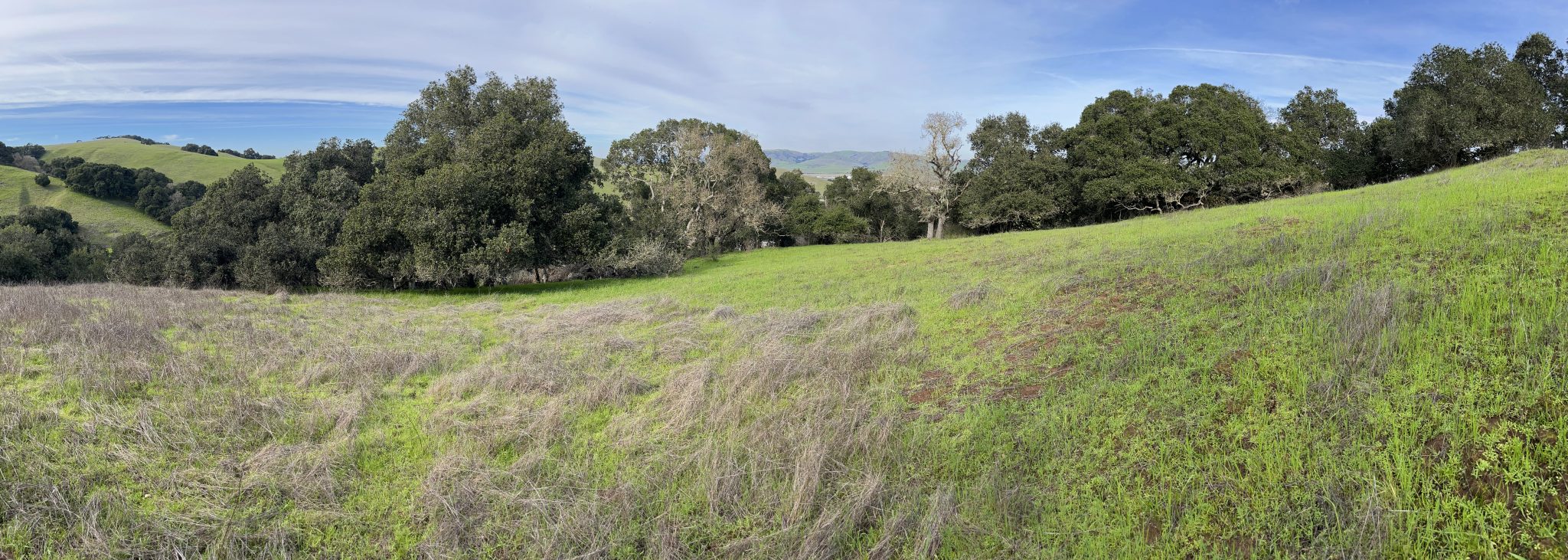
“These woods are about as good as it gets in California,” Childress says. “Stopping a wildfire in these woods would be much easier than in the Santa Cruz Mountains, where you have deep duff layers and sticks on top of sticks and trees super tight.”
Prescribed burns would help clear a lot of the duff and thick growth Childress describes, and better prepare those WUI areas for future wildfires. “But as these areas develop, they become more complicated spaces in which to conduct prescribed burns,” says Greenberg. “It becomes more costly and there are more health and safety risks associated with the burns.”
As part of the large-scale resident survey, UC Santa Cruz anthropologist Andrew Matthews will be leading the effort to discern obstacles to prescribed burning. The survey will include questions to help the researchers figure out who is participating in organized fire preparation efforts and the challenges prescribed burners face in this environment. Many of those residents may not have the time, skill, financial ability or interest in conducting controlled burns or otherwise maintaining their property in a way that protects them, their neighbors, and the environment from fire and other natural disasters.
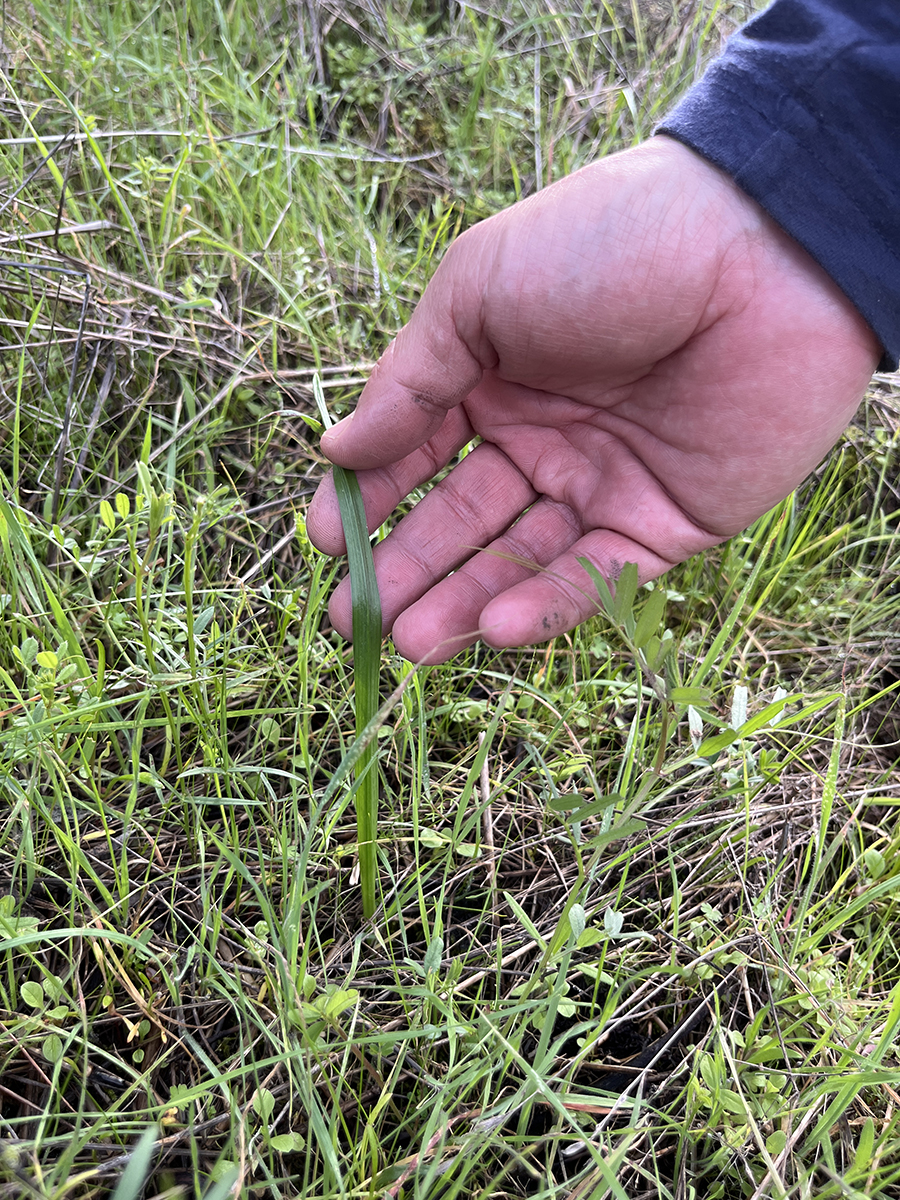
Saving room for everyone
As the team reaches the burn area Childress refers to as the “pocket meadow,” Rick Flores, Associate Director of the UC Santa Cruz Arboretum and Botanic Gardens, crouches down to touch a long blade of grass that’s not actually a grass, but a native geophyte, or bulb. “The leaves typically have a main vein that runs up the center and are much broader than grass. That’s one way you know it’s one of the major geophytes,” he says.
Flores also serves as the steward of the Amah Mutsun Relearning Program at the UC Santa Cruz Arboretum and Botanic Gardens, assisting the tribe in relearning dormant cultural knowledge as it pertains to native plant cultivation and stewardship of ecosystems. In collaboration with the Central Coast Prescribed Burn Association, a group supported by University of California Agriculture and Natural Resources, the Amah Mutsun Relearning Program aims to research the effects contemporary prescribed burns have on native plants and ecosystems. This research can inform the efforts of the Amah Mutsun Land Trust to bring fire back to their traditional territory.
However, “in order to understand what benefits indigenous fire had on the landscape, we would need repeated burns over hundreds of years,” Flores says. While that’s unlikely to happen, he says it’s important to note that “we don’t live in the same landscape as Native people did hundreds of years ago. We now have exotic plants and increased fuel loads.” The environment is different now, and the ecological effects of fires will be, too.
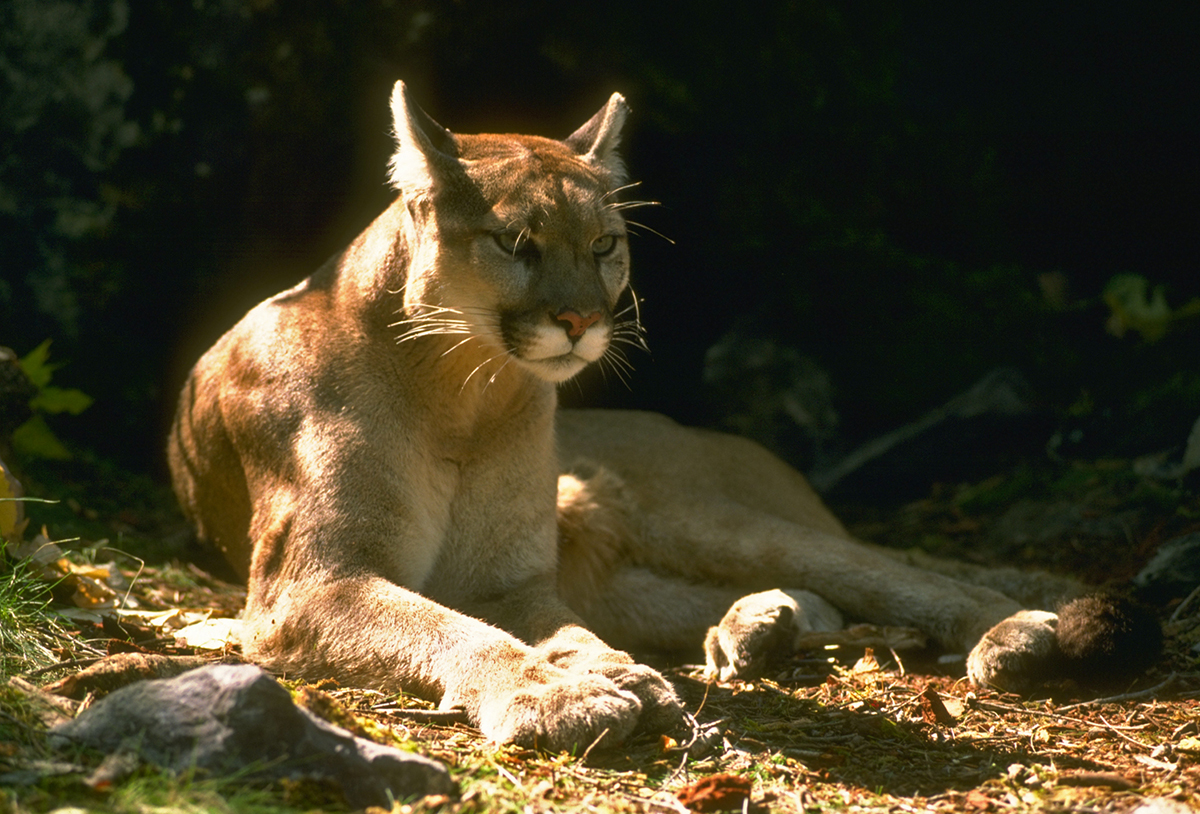
The Santa Cruz Mountains are a biodiversity hotspot that brims with a great variety of plants and animals. Many of these species are found nowhere else in the world and increasingly threatened by human disturbance and loss of habitat. Among the most iconic and controversial native animals is the puma, or mountain lion. Around 50 adult pumas are estimated to live in the area. Because development has fragmented their habitat, experts believe inbreeding could soon lead to the big cats’ demise.
One of Greenberg’s earliest partners in this project was Chris Wilmers, ecologist and professor at UC Santa Cruz and principal investigator of the Santa Cruz Puma Project. Wilmers recognizes that many people are likely being pushed into the WUI because of the increased cost of housing in more urban areas. But as WUI development increases, so does habitat fragmentation for pumas and other species.
However, thanks to strategic land acquisitions by various land trusts in recent years, “there’s now this kind of greenbelt around the bay that could be made continuous” with wildlife crossings, Greenberg says.
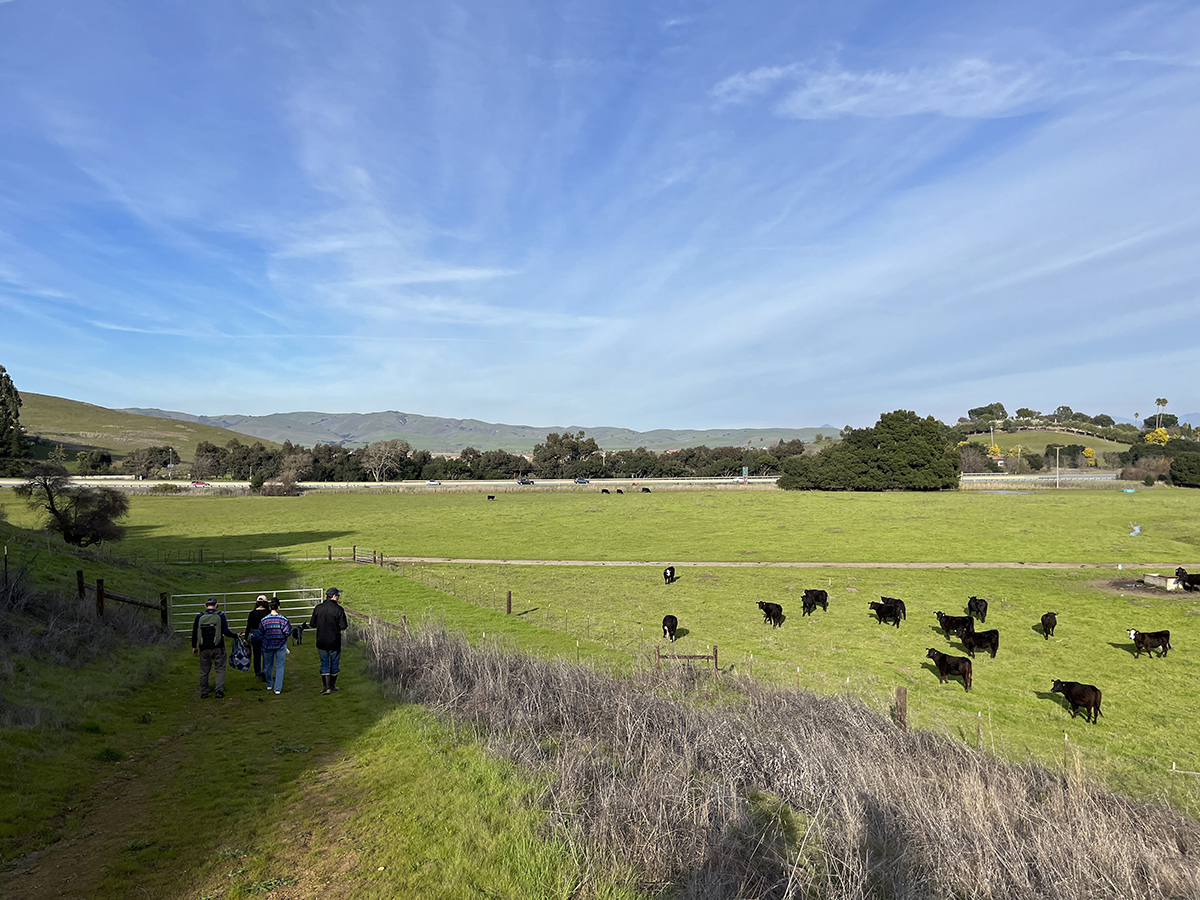
The Nyland property, for example, is bordered on one side by State Highway 156. Although the majority of the land on the other side of the highway is covered with suburban developments, a sliver of protected natural land remains: Rocks Ranch, which stretches into the northern portion of the Gabilan mountain range. That portion of the highway has become a site of significant mortality for wildlife attempting to move between the Santa Cruz and Gabilan ranges, so ecologists and conservationists are planning to build a tunnel or overpass in that area to serve as a wildlife crossing. The crossing could slash wildlife mortality by up to 95 percent.
Prior to the Land Trust of Santa Cruz County’s purchase of Rocks Ranch in 2020, a wildlife crossing would have been out of the question. A 900-unit housing development and hotel were slated to be built along the highway corridor. But while preserving land for wildlife habitat helps conservation, it doesn’t ameliorate the need for more housing. For that reason, Greenberg and her colleagues are hoping to encourage conservation land trusts to join forces with community land trusts and other urban housing advocates, as there are often more resources available for conservation than affordable housing. The hope is for these two occasionally competing interests to find ways to work together.
Ultimately, the researchers aim to use the data and information gathered through this cross-disciplinary study to produce an interactive planning tool. Community and urban planners and the public will be able to engage with the WUI Equity Atlas to inform their decisions around urban and environmental sustainability issues.
“We have a confluence of all of these pressures—on the one hand for conservation, restoration, and stewardship, and then on the other hand an increased pressure for development and affordable housing,” Greenberg says. “We see a lot of potential alliance-building between folks who are concerned about all of these things, and we hope to use our research to bring all those groups together to find solutions.”
